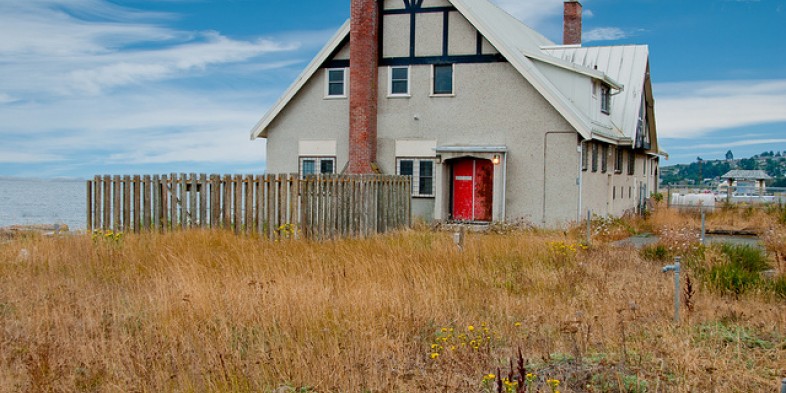On Friday, September 13, 2013, the old Ranger Station at Esquimalt Lagoon was removed by the Department of National Defence. The building was no longer in use and was heavily damaged by seawater. Logs were often thrown against the building in winter and progressive erosion of the site threatened to undermine the concrete foundation and was already compromising the security fence and therefore people’s safety.
Future plans for the site have not yet been decided. The impact of the ocean (particularly during winter storms) and natural erosion of the area will need to be considered.
Read more: Landmark Esquimalt Lagoon building torn down - Goldstream Gazette.
A little bit of history
- Prior to 1800, the intertidal clam beds at the entrance to the lagoon were extensively harvested by ancestors of the Esquimalt and Songhees First Nations.
- During the 1800s, Coburg Peninsula was used as a rifle range.
- In 1863, a sawmill was built at the mouth of Colwood Creek, which was replaced in 1871 by a tannery.
- In 1902, James Dunsmuir, bought a large portion of the land to build Hatley Castle.
- In 1930, the Esquimalt Lagoon Bridge was built by the Provincial Government.
- In about 1935 a pub called the Dugout stood at the location of the DND Ranger Station.
- Also in 1940, the federal government bought the Hatley Park land for military training and continued to use Coburg Peninsula as a rifle range.
- In early 1942 the Pacific Coast Militia Rangers were formed to protect British Columbia and calm public unease over possible enemy activities. The CFB Esquimalt Naval and Military Museum describes the Rangers:
"After the attack at Pearl Harbour and declaration of war against Japan, patrols of BC's rugged country appeared to be a necessity, one that could not be carried out by local militia forces, who were deemed more suited to populated areas.
Experienced men such as loggers, trappers, prospectors and ranchers were sought for this distinctive role. These men had knowledge of the local topography and terrain."
Read more on the CFB Esquimalt Naval and Military Museum site.



